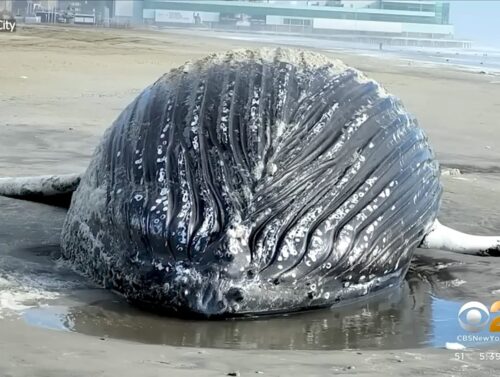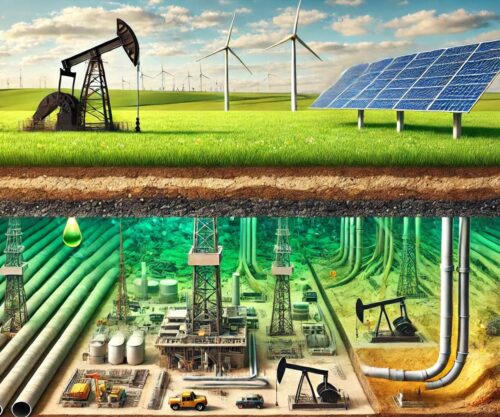
With 90 million people still in the path of the snow and ice storms sweeping across America, motorists can particularly appreciate President Donald J Trump’s Day One executive order eliminating automobile manufacturers’ requirements to sell electric vehicles. [emphasis, links added]
How appropriate that the president signed his executive order on one of the coldest days of the year.
Electric vehicles are estimated to lose an average of 20 percent of their battery range in cold weather. Research has found that, in freezing temperatures, a Tesla Model X (with a heat pump) loses 11 percent of its normal range. A Volkswagen ID.4 loses 37 percent.
Americans love choice, and drivers want to be able to choose their cars.
Eight percent of cars sold in 2024 were battery-powered electric, but President Joe Biden ordered his Environmental Protection Agency and his Department of Transportation to issue unpopular regulations that could have required the majority of all new passenger cars sold and a quarter of heavy lorries to be battery-powered electric by 2032.
President Trump has promised to undo these regulations and get rid of electric vehicle subsidies for manufacturers and drivers.
Electric cars can run out of power in ice storms. In many areas, the only cars seen on roads in the current spate of snowstorms are sport utility vehicles, pickup trucks, or other four-wheel-drive vehicles.
New York City dropped its electric snowplows because “they could not plow the snow effectively” and “conked out after four hours,” compared with 12 to 24 hours of operation for diesel snowplows, according to New York Department of Public Sanitation commissioner Jessica Tisch, now New York City police commissioner.
Small businesses and farmers cannot take snow days off, so they rarely work with electric vehicles. That’s good – imagine the economic loss of farmers and technicians and small businesses unable to work on snow days because their trucks and tractors “conked out”.
President Trump plans to end the tax credit of up to $7,500 per car to buy or lease an electric vehicle, passed by Congress in the Inflation Reduction Act.
Even with the $7,500 tax credit, car salesmen are not selling enough EVs to meet the mandate. In 2023 and 2024 they wrote to President Biden begging him to “tap the brakes” on his regulations.
Over 80 percent of these EV tax credits are claimed by households in the top fifth of the income distribution. Many use the vehicles as second cars for in-town trips, but for longer trips, they have a gasoline-powered car.
The electric version of the base version of the Ford 150 pickup truck, the best-selling vehicle in America, costs almost an additional $30,000.
Tesla’s base prices start at $39,000 for a Model 3 and go up to almost $100,000 for a Model X.
A diesel lorry can cost about $120,000; an electric lorry can cost as much as $450,000- $500,000, raising the costs of transporting goods for everyone.
Plus, America doesn’t even have the electrical grid capacity, the charging stations, or the technology to operate a fleet of EVs and long-haul electric lorries [trucks] – and won’t for quite some time.
Vehicle chargers are competing for room on the electric grid with data centers, artificial intelligence technology, and demands for more heating and air conditioning.
Conventional cars can be easily refueled at the pump in five or 10 minutes, but recharging an electric vehicle can take 45 minutes.
If someone is already using the charging station, the wait can double. Most people don’t want to let their EV batteries go below 20 percent, and the charging rate can go down when it is charged over 80 percent.
Privileged EV owners can recharge cars at home or work. But not everyone has such facilities. Some live in houses and flats without garages and must rely on public charging stations for their EVs.
Although Congress allocated $5 billion in 2022 to the National Electric Vehicle Infrastructure Program to build 500,000 charging stations, only 58 are in operation today, according to The Washington Post.
Tesla has its own network of charging stations for its cars, but drivers of other vehicles rely on private or government-provided charging stations.
Americans want to be energy-independent, but requirements for EVs make America’s transportation network dependent on China, which strengthens the Chinese economy.
China makes 80 percent of the world’s electric batteries, and the Chinese car company BYD is the world’s largest electric vehicle producer.
Read rest at Telegraph



















I have seen this EV Recharge Station several times and its never used the same way with those Bike Racks set up by the Rotory Club
Nothing says Hypocracy better then a Fossil Fuel Powered EV Recharge Station
I have seen this EV Recharge Station several times and its never used the same way with those Bike Racks set up by the Rotory Club
Like almost all substitutes for fossil fuel-dependent power generation, i.e. wind and water flow renewables, equipment dependent on the weather is dud, costlier and no way “greener”.